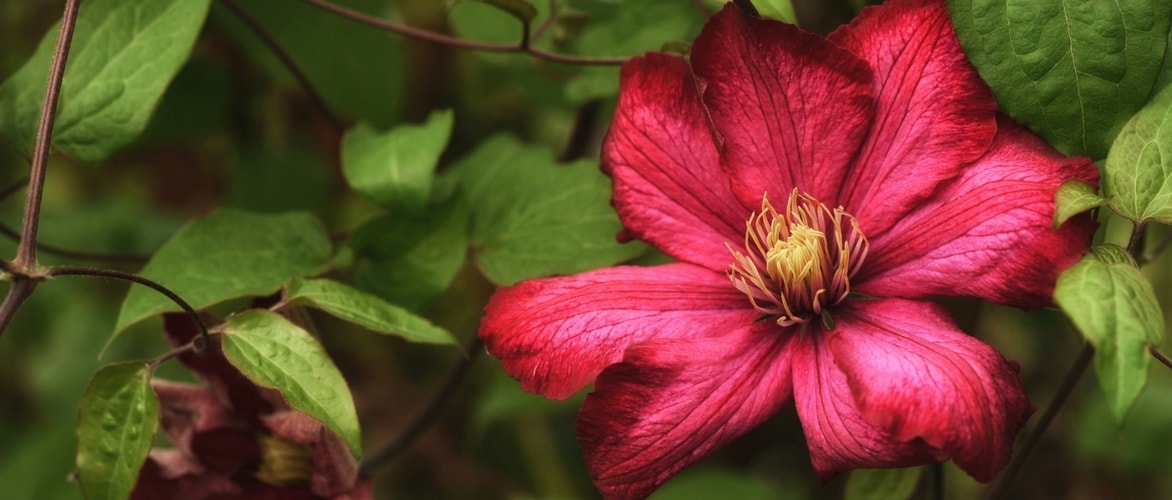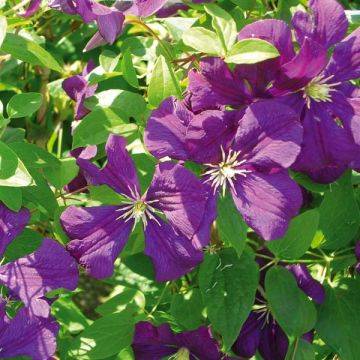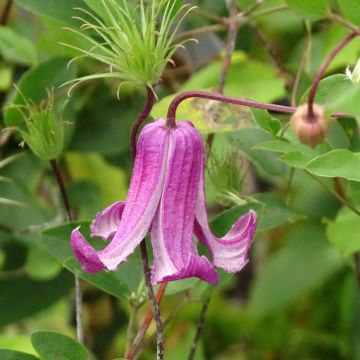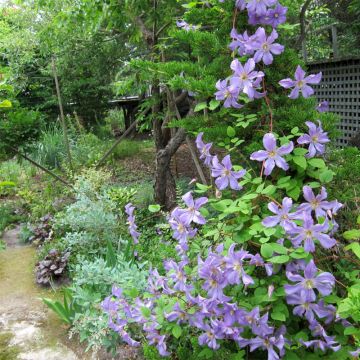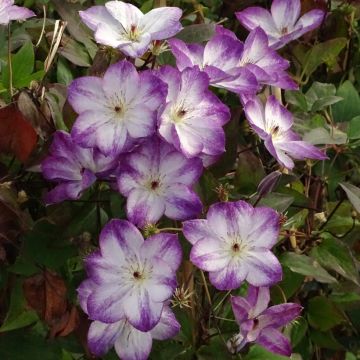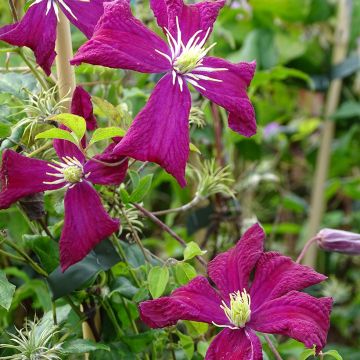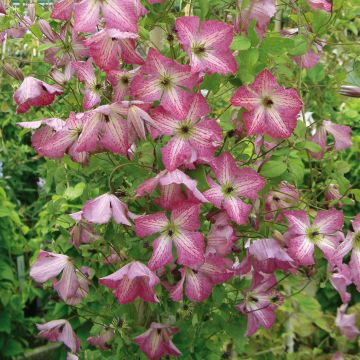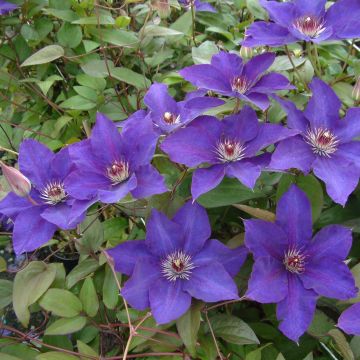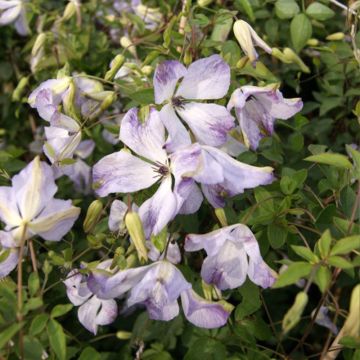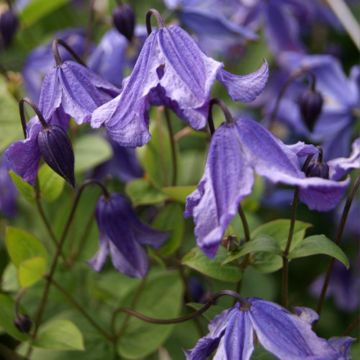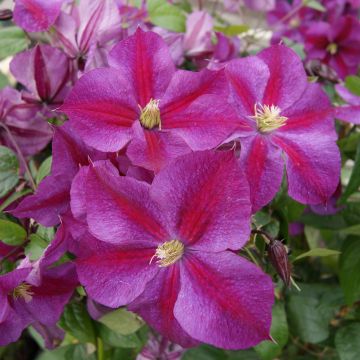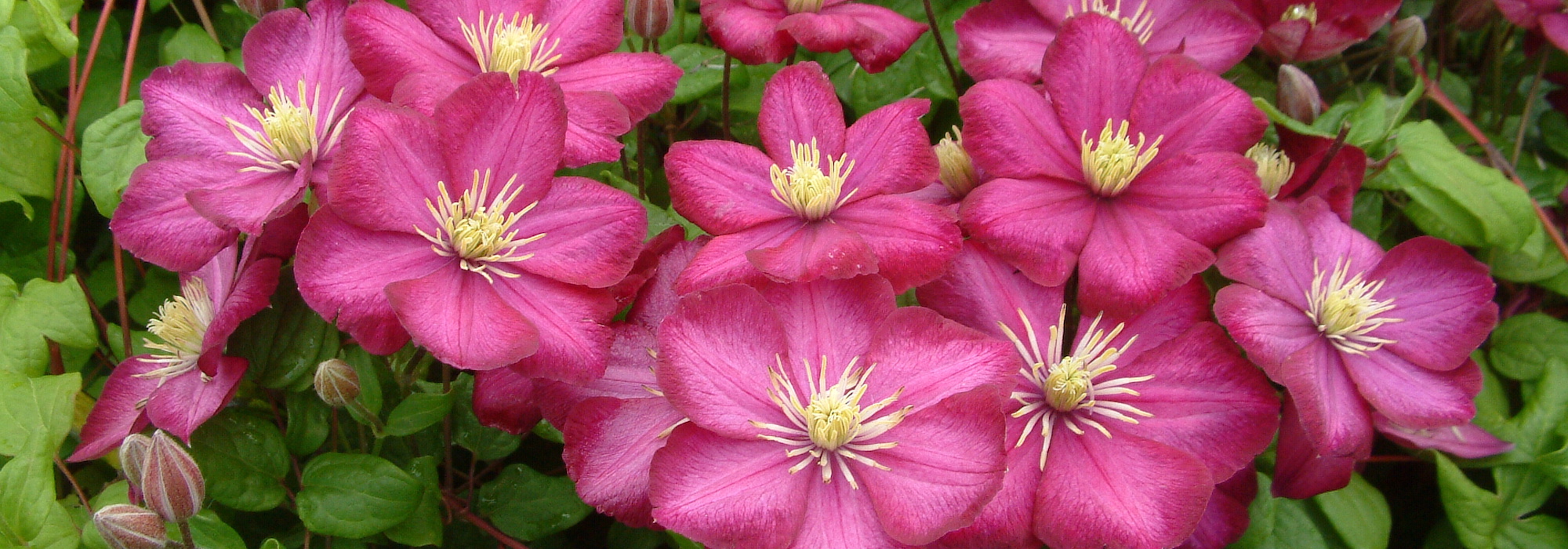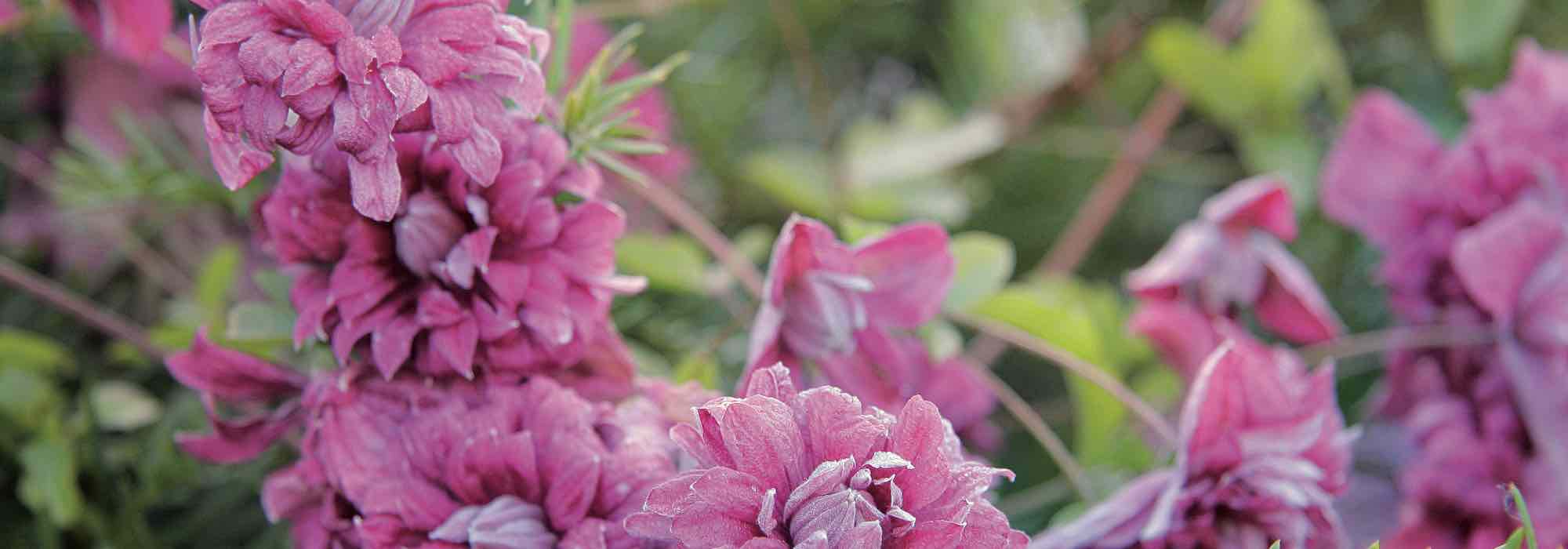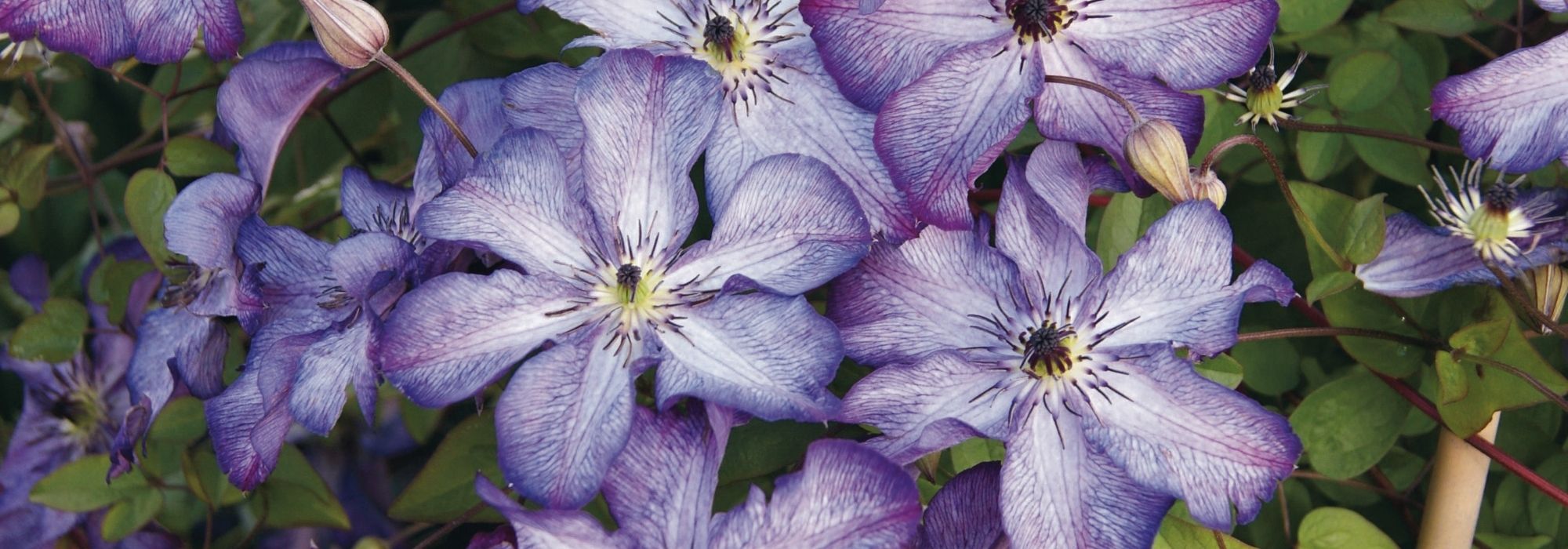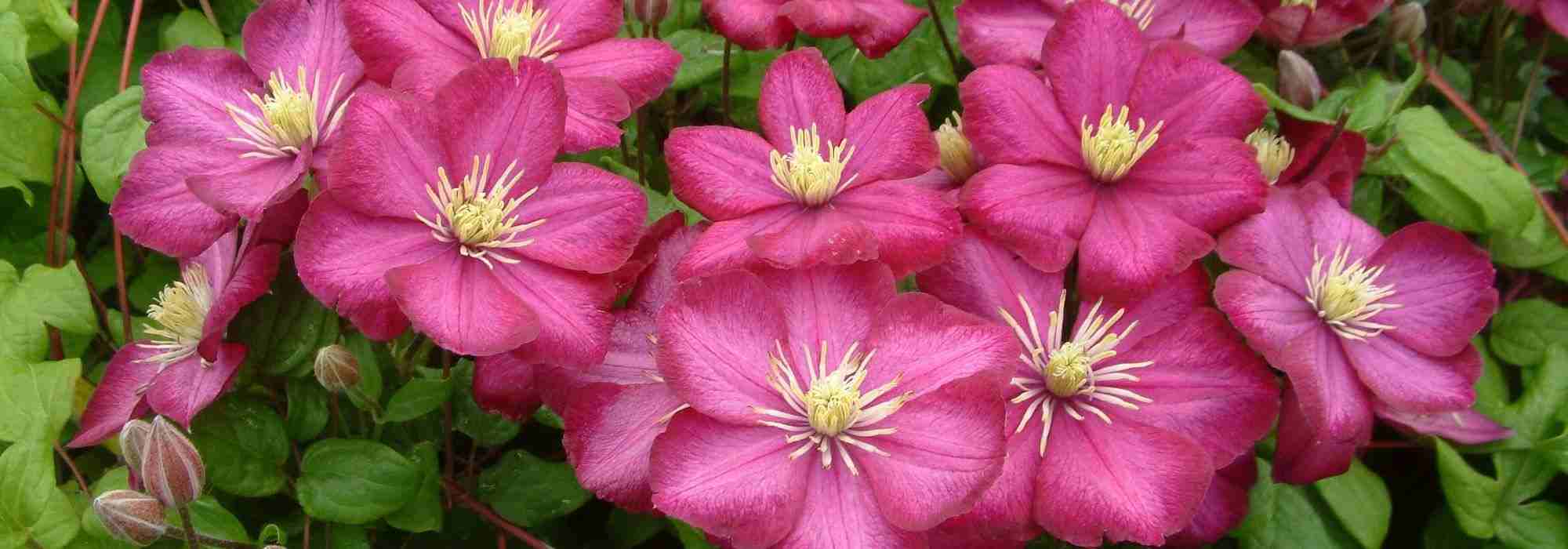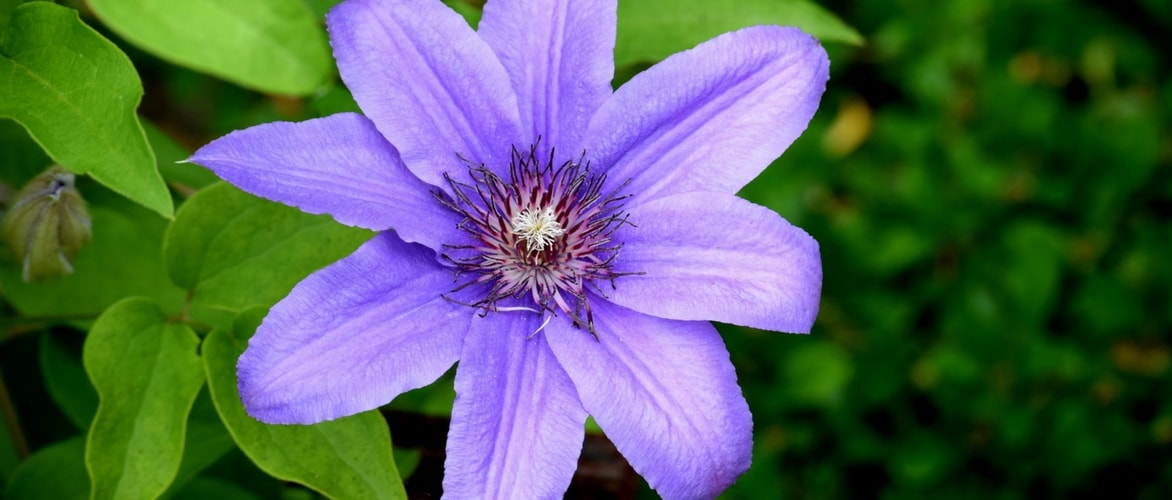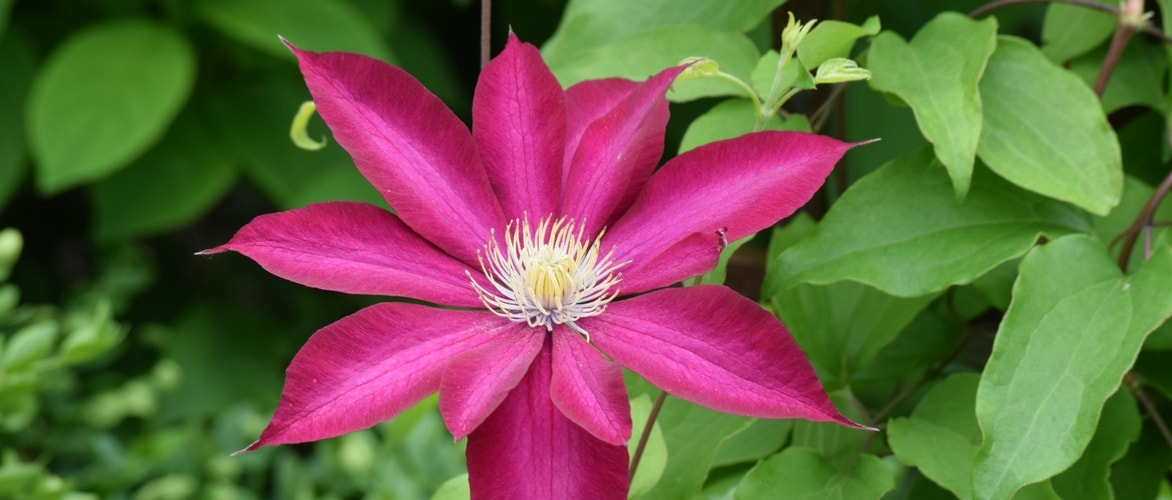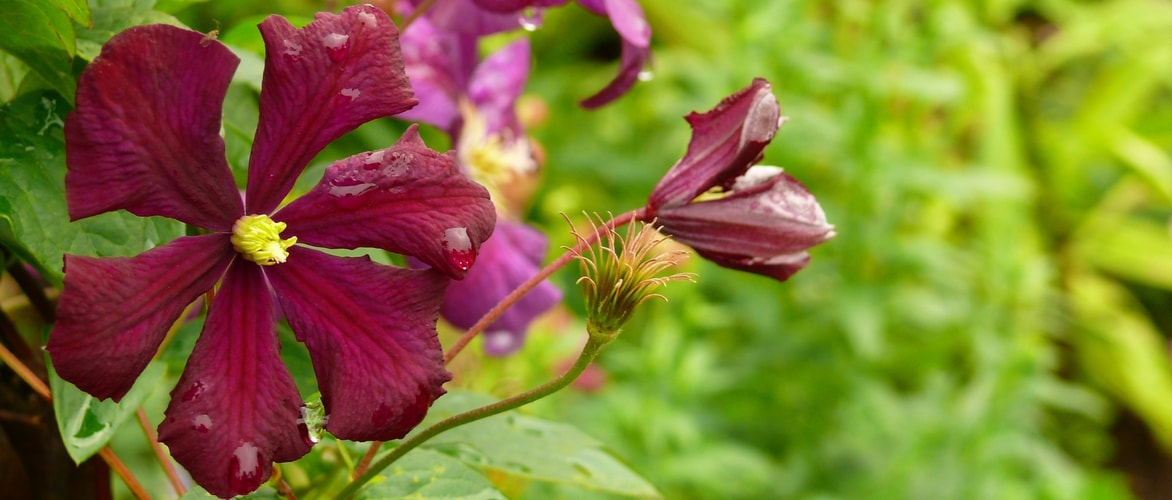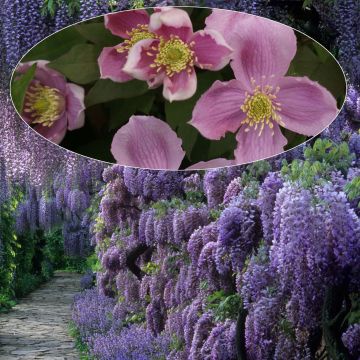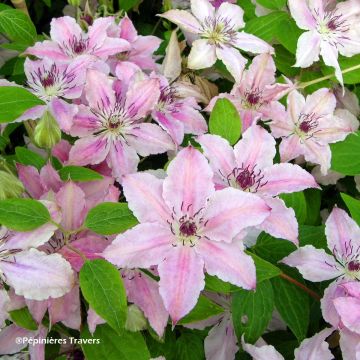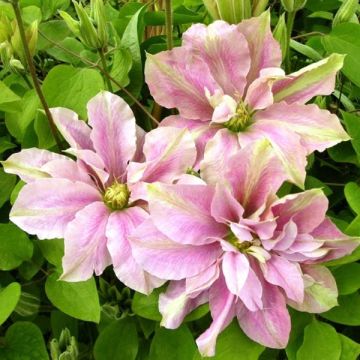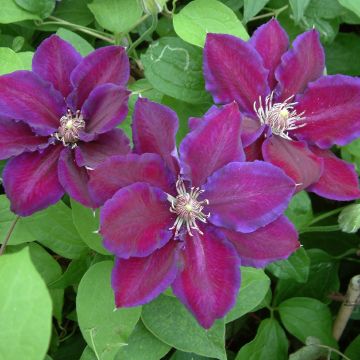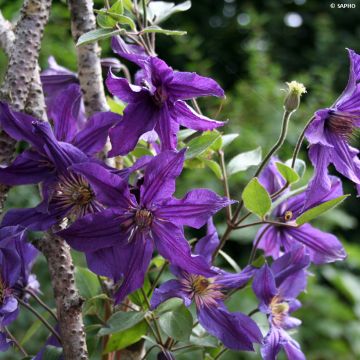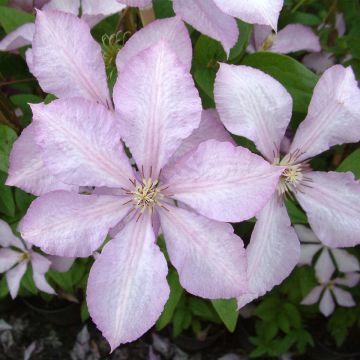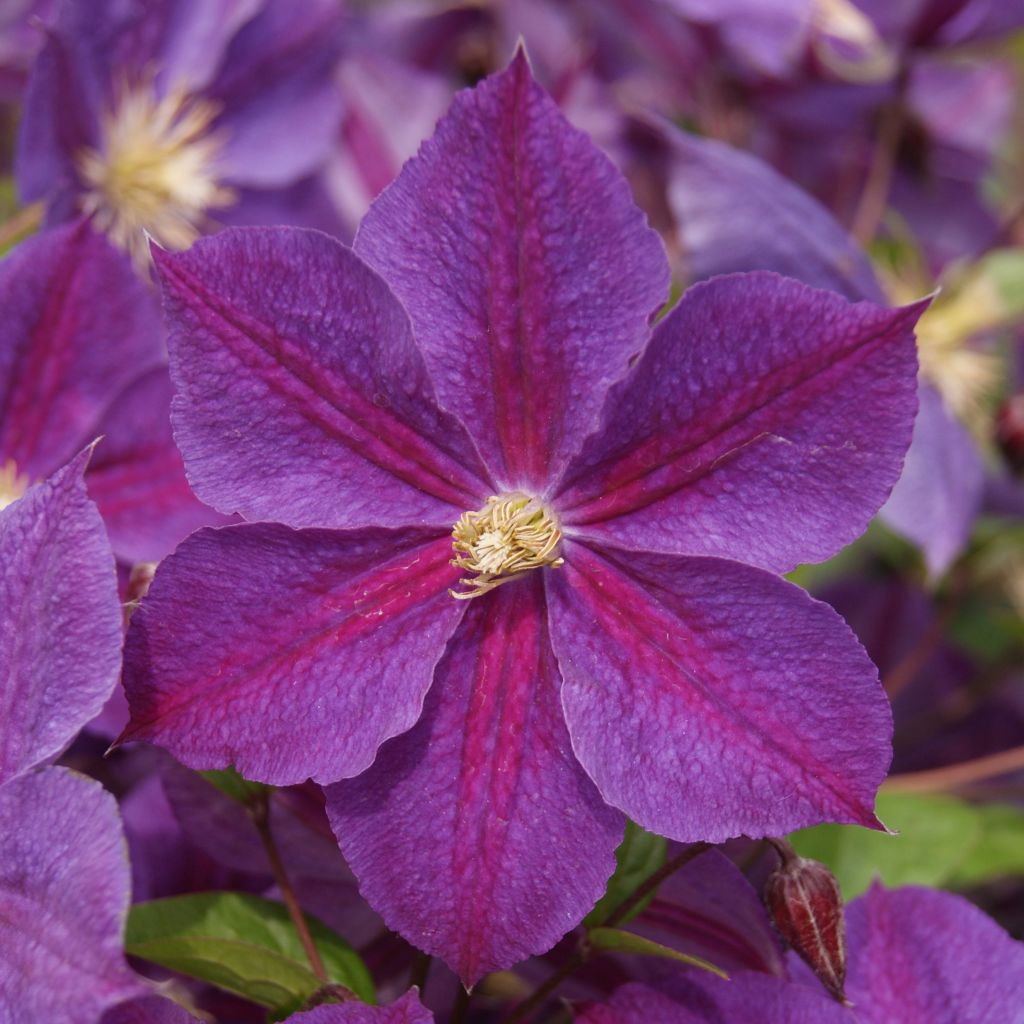

Clematis Star of India
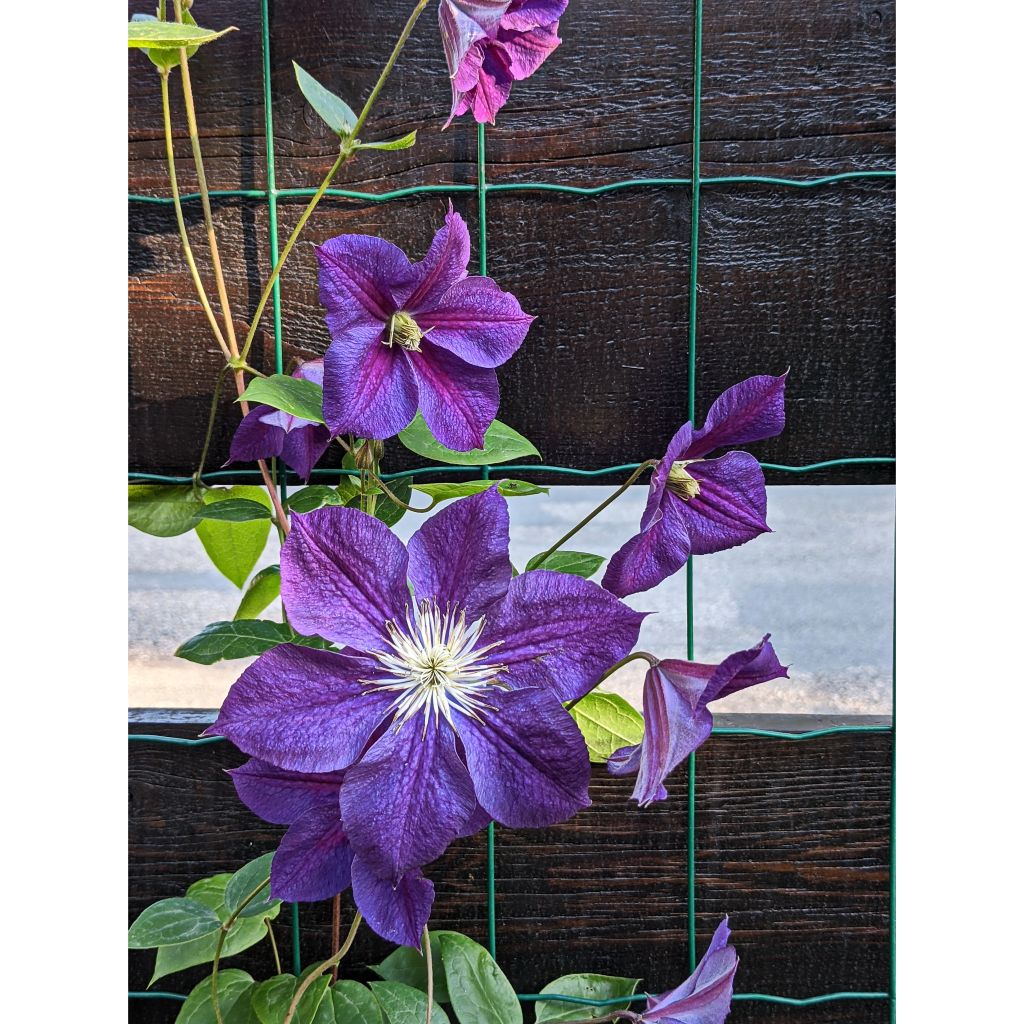

Clematis Star of India
Clematis Star of India
Clematis Star of India
Clematis, Traveller's Joy, Virgin's Bower, Old Man's Beard, Leather Flower
Delivered in perfect condition
Doralice, 03/06/2025
Special offer!
Receive a €20 voucher for any order over €90 (excluding delivery costs, credit notes, and plastic-free options)!
1- Add your favorite plants to your cart.
2- Once you have reached €90, confirm your order (you can even choose the delivery date!).
3- As soon as your order is shipped, you will receive an email containing your voucher code, valid for 3 months (90 days).
Your voucher is unique and can only be used once, for any order with a minimum value of €20, excluding delivery costs.
Can be combined with other current offers, non-divisible and non-refundable.
Home or relay delivery (depending on size and destination)
Schedule delivery date,
and select date in basket
This plant carries a 6 months recovery warranty
More information
We guarantee the quality of our plants for a full growing cycle, and will replace at our expense any plant that fails to recover under normal climatic and planting conditions.
Does this plant fit my garden?
Set up your Plantfit profile →
Description
Clematis 'Star of India' is an old variety created in England in the 19th century, very vigorous and floriferous. From June to September, it is studded with magnificent and large single flowers, almost square, with 6 wide imbricate sepals, violet-purple, with a crimson central band, and light yellow stamens. Plant in partial shade to preserve its vibrant colours.
Clematis 'Star of India', belonging to the Ranunculaceae family, is an old variety, resulting from a cross-breeding between Clematis lanuginosa and Clematis jackmanii. It belongs to the late-flowering large-flowered Clematis group. Clematis attach themselves to their support through petioles transformed into tendrils. This magnificent climbing plant with a woody stump, 'Star of India', is well-branched, with deciduous foliage. It has rapid and remarkably vigorous growth, reaching a height of up to 3m (10ft), with a spread of about 1m (3ft) to 1.5m (5ft). This superb cultivar, very floriferous, presents magnificent large single flowers, with 6 wide and imbricate sepals, measuring 12 to 14cm (5 to 6in) in diameter. Its velvety flowers, purple-violet, with a crimson red band in the centre of the sepals, contrast beautifully with a light yellow stamen. An abundant and very bright flowering, with a sublime colour harmony! It should be noted that the vibrant colours of its flowers tend to fade in the sun. A partially shaded exposure is therefore preferable.
This old variety was created in 1864 by Thomas Cripps in England, and has been on the market since 1867.
The late-flowering large-flowered Clematis, the ultimate climbing plants (without ever being invasive or cumbersome), are easy to grow and can be staged in a thousand and one ways. Their undeniable romantic, natural and wild touch in the garden blends beautifully with climbing or rambling roses. Undoubtedly ideal for adorning and enhancing walls, trellises, pergolas, arches, fences etc. they will also be spectacular when planted in trees and shrubs, prolonging their flowering and connecting with autumn colours. Clematis are also excellent candidates for container gardening. The 'Star of India' cultivar will be stunning when paired with a climbing or rambling rose, a Japanese Maple, a Beautyberry, a Shrubby Cinquefoil, an Arboreal Fuchsia, or an Escallonia. Medium-height perennials will shade its base, such as Epimedium, Daylily, Oriental Poppy, Iris, Avens or Crocosmia. Pairing this Clematis Star of India with species with bright pink or orange foliage or flowering will create a truly exotic atmosphere!
Clematis Star of India in pictures
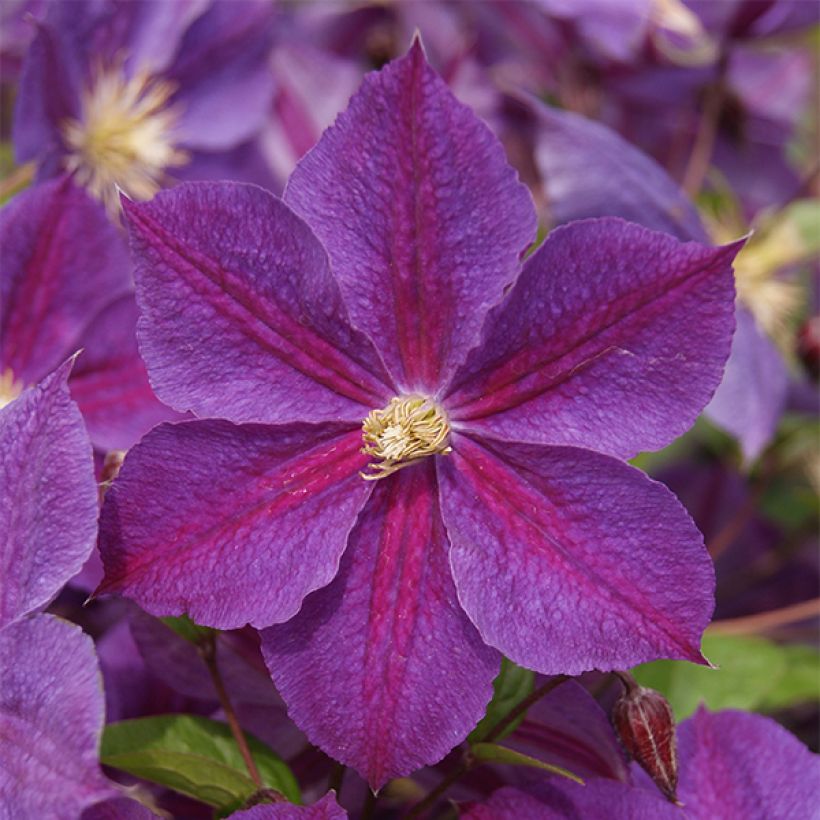

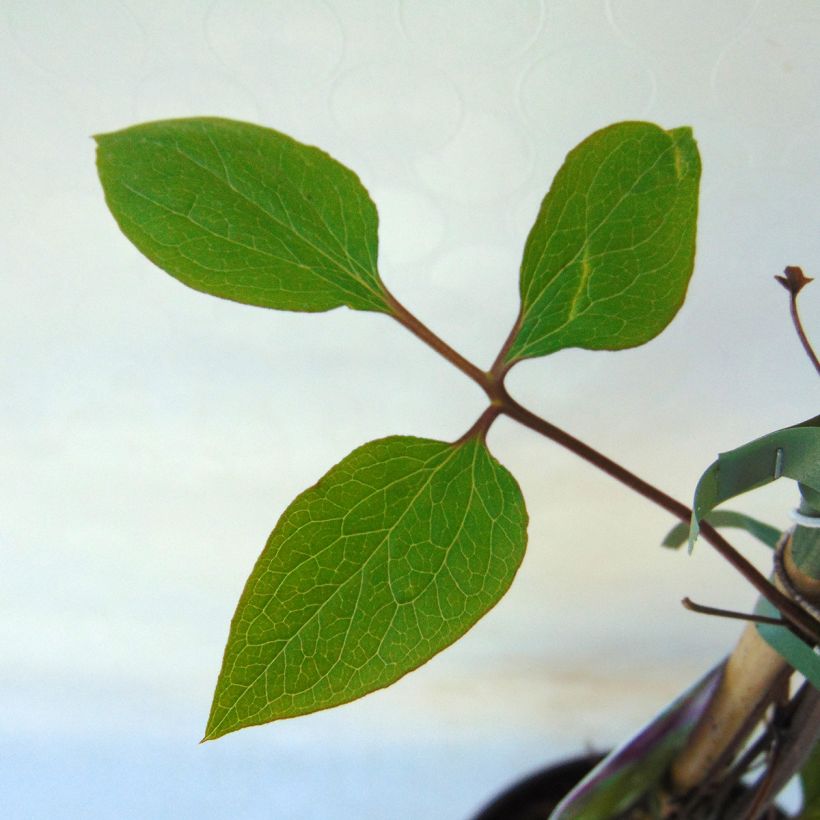

Plant habit
Flowering
Foliage
Botanical data
Clematis
Star of India
Renonculacées
Clematis, Traveller's Joy, Virgin's Bower, Old Man's Beard, Leather Flower
Cultivar or hybrid
Other Clematis Viticella
View all →Planting and care
The 'Star of India' Clematis is a perfectly hardy and robust variety. It prefers a semi-shaded exposure (so that its vibrant colours do not fade), as well as a fertile, humus-rich, moist, and well-drained soil. Clematis like to climb towards the sun, with the base in the shade. It is therefore absolutely essential that the base of its stem and its roots are in the shade. For this, a flat tile placed at an angle will provide the necessary shade. Similarly, a bushy perennial plant or a low-growing bush planted in front of the Clematis will also provide perfect protection against the sun, while attractively concealing the Clematis stump. When planting, take care when handling the root ball as Clematis roots are quite fragile. It will be important to work the soil deeply and incorporate compost as well as a handful of bone or dried blood powder; a base fertiliser that will benefit the Clematis's growth. In the first few weeks after planting, regular but moderate watering will be necessary to keep the soil consistently moist. The main enemy of Clematis is excessive humidity, so the soil should never be waterlogged. Indeed, overly wet soil can cause the wilting of its stems and leaves, often resulting in its demise. The Clematis plant should be placed in the hole at an angle, with the stem oriented towards the support it will climb on. Cover with soil, creating a small mound to fully cover the base and stem of the Clematis in order to reduce the risk of wilting and promote the emergence of vigorous shoots from the stump. After planting, prune the stems of summer-flowering Clematis to 30 cm (12in) or 40 cm (16in) above a healthy pair of buds. Train the stems without constricting them until the plant can grip on its own thanks to its voluble petioles. Mulch the Clematis in February with garden compost or well-rotted manure, avoiding direct contact with the stems.
Planting period
Intended location
Care
Planting & care advice
-
, onOrder confirmed
Reply from on Promesse de fleurs
Similar products
Haven't found what you were looking for?
Hardiness is the lowest winter temperature a plant can endure without suffering serious damage or even dying. However, hardiness is affected by location (a sheltered area, such as a patio), protection (winter cover) and soil type (hardiness is improved by well-drained soil).

Photo Sharing Terms & Conditions
In order to encourage gardeners to interact and share their experiences, Promesse de fleurs offers various media enabling content to be uploaded onto its Site - in particular via the ‘Photo sharing’ module.
The User agrees to refrain from:
- Posting any content that is illegal, prejudicial, insulting, racist, inciteful to hatred, revisionist, contrary to public decency, that infringes on privacy or on the privacy rights of third parties, in particular the publicity rights of persons and goods, intellectual property rights, or the right to privacy.
- Submitting content on behalf of a third party;
- Impersonate the identity of a third party and/or publish any personal information about a third party;
In general, the User undertakes to refrain from any unethical behaviour.
All Content (in particular text, comments, files, images, photos, videos, creative works, etc.), which may be subject to property or intellectual property rights, image or other private rights, shall remain the property of the User, subject to the limited rights granted by the terms of the licence granted by Promesse de fleurs as stated below. Users are at liberty to publish or not to publish such Content on the Site, notably via the ‘Photo Sharing’ facility, and accept that this Content shall be made public and freely accessible, notably on the Internet.
Users further acknowledge, undertake to have ,and guarantee that they hold all necessary rights and permissions to publish such material on the Site, in particular with regard to the legislation in force pertaining to any privacy, property, intellectual property, image, or contractual rights, or rights of any other nature. By publishing such Content on the Site, Users acknowledge accepting full liability as publishers of the Content within the meaning of the law, and grant Promesse de fleurs, free of charge, an inclusive, worldwide licence for the said Content for the entire duration of its publication, including all reproduction, representation, up/downloading, displaying, performing, transmission, and storage rights.
Users also grant permission for their name to be linked to the Content and accept that this link may not always be made available.
By engaging in posting material, Users consent to their Content becoming automatically accessible on the Internet, in particular on other sites and/or blogs and/or web pages of the Promesse de fleurs site, including in particular social pages and the Promesse de fleurs catalogue.
Users may secure the removal of entrusted content free of charge by issuing a simple request via our contact form.
The flowering period indicated on our website applies to countries and regions located in USDA zone 8 (France, the United Kingdom, Ireland, the Netherlands, etc.)
It will vary according to where you live:
- In zones 9 to 10 (Italy, Spain, Greece, etc.), flowering will occur about 2 to 4 weeks earlier.
- In zones 6 to 7 (Germany, Poland, Slovenia, and lower mountainous regions), flowering will be delayed by 2 to 3 weeks.
- In zone 5 (Central Europe, Scandinavia), blooming will be delayed by 3 to 5 weeks.
In temperate climates, pruning of spring-flowering shrubs (forsythia, spireas, etc.) should be done just after flowering.
Pruning of summer-flowering shrubs (Indian Lilac, Perovskia, etc.) can be done in winter or spring.
In cold regions as well as with frost-sensitive plants, avoid pruning too early when severe frosts may still occur.
The planting period indicated on our website applies to countries and regions located in USDA zone 8 (France, United Kingdom, Ireland, Netherlands).
It will vary according to where you live:
- In Mediterranean zones (Marseille, Madrid, Milan, etc.), autumn and winter are the best planting periods.
- In continental zones (Strasbourg, Munich, Vienna, etc.), delay planting by 2 to 3 weeks in spring and bring it forward by 2 to 4 weeks in autumn.
- In mountainous regions (the Alps, Pyrenees, Carpathians, etc.), it is best to plant in late spring (May-June) or late summer (August-September).
The harvesting period indicated on our website applies to countries and regions in USDA zone 8 (France, England, Ireland, the Netherlands).
In colder areas (Scandinavia, Poland, Austria...) fruit and vegetable harvests are likely to be delayed by 3-4 weeks.
In warmer areas (Italy, Spain, Greece, etc.), harvesting will probably take place earlier, depending on weather conditions.
The sowing periods indicated on our website apply to countries and regions within USDA Zone 8 (France, UK, Ireland, Netherlands).
In colder areas (Scandinavia, Poland, Austria...), delay any outdoor sowing by 3-4 weeks, or sow under glass.
In warmer climes (Italy, Spain, Greece, etc.), bring outdoor sowing forward by a few weeks.






























